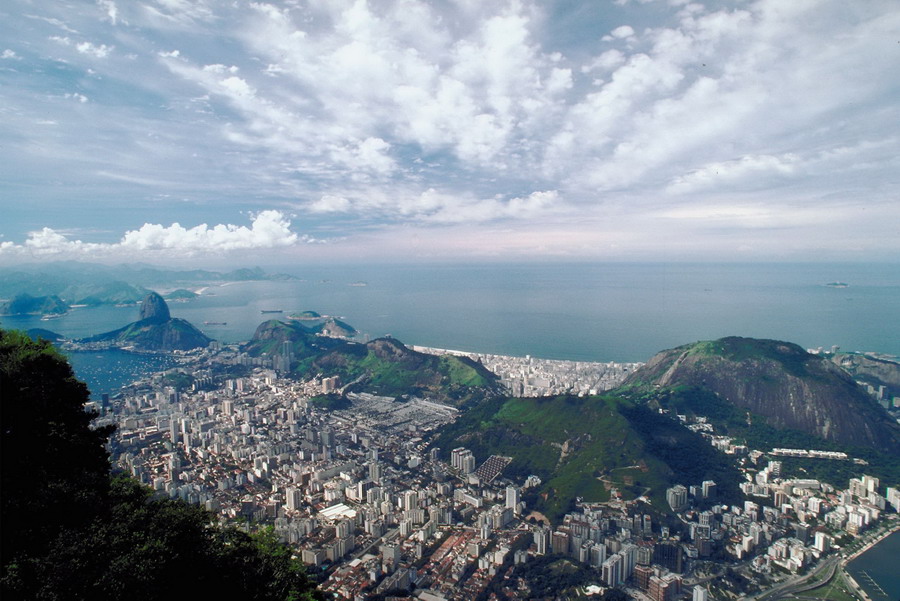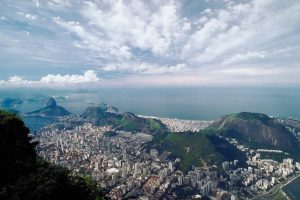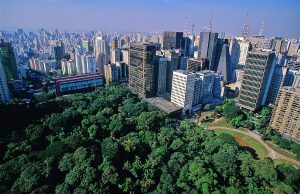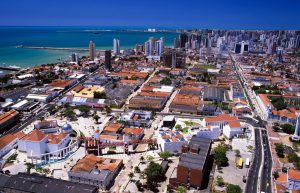With the world locked in an economic crisis, there aren’t many growth opportunities for U.S. retailers. But one ray of light is Brazil. Short-term, it’s unlikely to avoid a slide into recession. Fourth quarter 2008 GDP posted the sharpest decline in a decade and The Economist predicts a further 1.5 percent slip in real GDP growth this year. But that doesn’t change Brazil’s potential as “a relatively young, developing economy that’s catching up with the more mature economies of the United States and Europe,” says store design veteran Bryan Gailey. “There’s a growth of consumerism all over the country, not just in Rio de Janeiro and São Paulo.”
Brazil’s consumer activity is reaching out beyond the country’s two largest urban centers to Salvador, Brasilia, Fortaleza, Belo Horizonte, Curitiba, Manaus and Recife, all cities with more than 1.5 million residents. In total, this country of 200 million has 14 cities with 1 million or more people. Approximately 56 percent of the population is less than 29 years old.
More to the point, though, is the growing middle class, eager to advance into Brazil’s renowned “pleasure consumption” culture. And with a stronger currency and inflation mostly in check, Brazilians are on a spending spree. The economy grew 5.4 percent last year. Generous credit terms allow Brazilians to pay for refrigerators, cars and even plastic surgery over years instead of months.
So Brazil now seems like low-hanging açai just ripe for the picking. Brian Dyches, studio principal, international store design, at Little’s Costa Mesa, Calif., office, notes that Brazilians comprise the third-largest contingent attending the National Retail Federation convention and expo in New York each January. “They’re eager to see what we’re doing,” he says, “and to learn.”
Mass merchandisers of home goods, consumer electronics and food are experiencing the greatest growth. Walmart, one of the few U.S. retailers in the country, now has 315 units in 17 of Brazil’s 26 states and says it will expand to all of them. Until the recent recession helped fuel Walmart’s sales in the U.S., the retailer’s Brazilian sales were growing at more than twice the pace as here.
Walmart has narrowed the gap on its top two mass-merchant rivals, France’s Carrefour and home-grown retailer Companhia Brasileira de Distribuição. Those chains, plus Grupo Pão de Açúcar, the São Paulo-based operator of supermarkets, hypermarkets and home appliance stores, currently dominate the market. “The low inflation rates have been allowing all classes, for the first time, to buy consumer electronics, from cell phones to appliances and computers,” says Manoel Lima, one of Brazil’s leading retail architects. “Apple has become a successful brand here.”
Advertisement
They Look Marvelous
But Brazilian consumers are mostly known for their zeal in looking good – tall and tan and long and lovely. “This is a people that prizes looking good and being stylish,” says Gailey. “Everything here is about enjoyment.” They covet fashion, strolling the malls and spending on beloved European brands as well as on a stable of Brazilian fashion designers such as Alexandre Herchcovitch, Carlos Miele, Gloria Coelho, Carlota Joakino, Victor Hugo, Andrea Soletto and Ricardo Almeda.
Several U.S. brands (Nike, Timberland, Levi’s, Tommy Hilfiger) have stores in the major malls but most haven’t penetrated deeply into the market. Why? “I think Americans always regarded South America as remote and exotic,” Dyches says, “and tended to loop the entire continent together as unstable, corrupt and violent.” This allowed the local apparel brands to thrive and European fashion brands to fill the vacuum. But, says Dyches, Brazil need not be considered exotic to American sensibilities. “In terms of size, history, diversity, terrain and culture, it’s quite similar to the U.S.,” he says.
Design Opportunities and Challenges
Brazil also holds opportunity for U.S. retail design firms, also pinched by the current economy. Dyches feels the greatest opportunity comes not so much in creating exciting stores (“Brazil has some of the most interesting streetfront retailing in the world”) but in bringing the disciplines and processes needed to roll out a concept to 30 or 40 different locations. “In North America, we’re very systematic about implementing brand-building,” he says. “The Brazilians may be brilliant about building one store, but less disciplined in building brand consistency and economic efficiencies throughout a rollout.”
So the opportunity is there, but it’s not without challenges. As with most foreign markets, you have to start with an understanding of the culture.
“Brazilians know how to tap into the fun and excitement of beauty,” says Christian Davies, vp and managing creative director of FRCH Design Worldwide (Cincinnati). “There’s always a sense of theater, of dressing up. They all have 12 fragrances in their medicine chests.” Gailey says it’s a very aspirational mentality. “They appear to have a lovely life,” he notes, “no matter what their circumstances.”
All of it warrants a closer look. “You have to experience the culture, taste the food, learn the tax laws and understand how business is done,” says Dyches. “If you spend your time in São Paulo just sitting in the Hyatt, drinking caiparinhas with other Americans, you won’t get the essence of this marvelous place.”
EDITOR’S NOTE: This is Part I of a four-part series exploring the cultures, economy and potential for retail growth in the BRIC countries, Brazil, Russia, India and China. Next up: Russia.
Advertisement
SIDEBAR: WHY BRAZIL IS HAPPENING
Much of Brazil’s growth is credited to the policies of president Luiz Inácio da Silva, the former steelworker turned labor leader who was elected to the presidency in 2002. After decades of dictators, military rulers and corrupt politicians, the populist – and popular – “Lula” has fueled Brazil’s growth through a series of targeted social programs, construction projects and tax breaks.
According to the World Bank, Brazil has shrunk its income gap between wealthy and poor by six percentage points since 2001, more than any other country in South America this decade. Brazil also benefits from a global demand for commodities like soybeans and sugar-based ethanol, which it has in abundance. And new oil discoveries are expected to thrust Brazil into the ranks of the global oil powers within the next decade.
The state also controls its largest banks, which has kept credit flowing, inflation low and deposits safe. “We are benefiting from an ultra-conservative banking system and one of the lowest personal loan rates in the world,” says Manoel Lima, one of Brazil’s leading retail architects. “We’re coming out of an inflation culture that even now makes us shiver.”


 Photo Gallery1 week ago
Photo Gallery1 week ago
 Headlines4 days ago
Headlines4 days ago
 Headlines1 week ago
Headlines1 week ago
 Headlines2 weeks ago
Headlines2 weeks ago
 Headlines1 week ago
Headlines1 week ago
 Designer Dozen1 week ago
Designer Dozen1 week ago
 Headlines1 week ago
Headlines1 week ago
 Headlines1 week ago
Headlines1 week ago
















